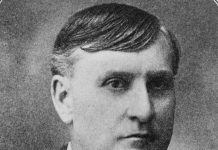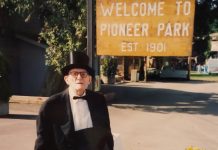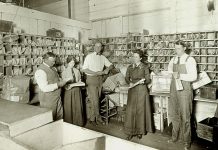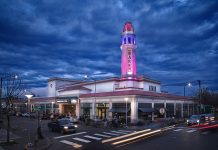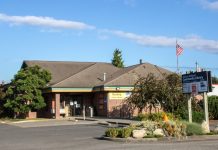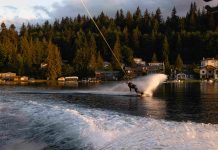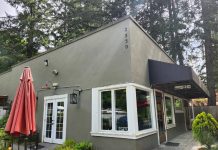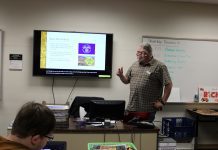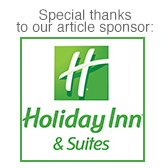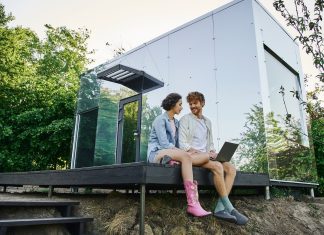If you’ve lived in Bellingham long enough, chances are you’ve heard legends of underground tunnels. Rumors abound regarding real maintenance tunnels under Western Washington University and legendary passageways connecting schools or businesses. But there’s truth to stories of labyrinths under downtown and the Birchwood neighborhood: Bellingham was literally built on mid-nineteenth-through-twentieth-century coal mines.
“The mine was Bellingham’s first big industry,” says Western Washington University geologist and local historian, George Mustoe. “It was for many years the biggest industry in town and it was the highest paying industry in town. They typically employed about 200 miners for much better money than the people working in shipyards and other industrial jobs.”
Mustoe’s “Coal Mines of Whatcom County” presentation for the Whatcom County Historical Society features his interviews with approximately 15 former miners. Like the mines, they live on through history.
A Century of Mining
Bellingham’s mining history began with early settlers. Captain William Pattle of the Hudson’s Bay Company established Fairhaven’s short-lived Pattle Mine in 1851.
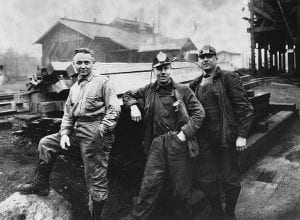
“When the first white settlers moved here, the Indians actually knew about coal. They referred to ‘black fire dirt’,” Mustoe says. “The first discovery was actually a tree that blew over and they found coal in the roots.”
Sehome Coal Mine, under modern-day downtown, became Bellingham’s first major producer in 1853. “They were shipping coal from Bellingham down to San Francisco and it was mostly going for steamships, back in the days when the ships were burning coal, instead of burning oil like they switched to later,” Mustoe says. Sehome Coal Mine closed in 1878, its records and maps perishing in the 1906 San Francisco earthquake and fire.
The nineteenth century brought several mines around Lake Whatcom, most notably Blue Canyon Mine, from 1891 to 1919. Its coal reached the United States Pacific Fleet via the Bellingham Bay and Eastern Railway. In 1895, Blue Canyon became the site of Washington’s deadliest industrial accident: a methane gas explosion that killed 23. The company’s monument to the miners is still on display at Bayview Cemetery.
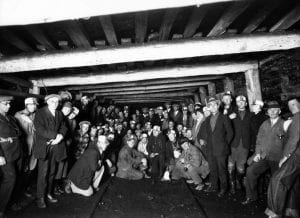
1918 would bring Bellingham’s biggest mining operation: Bellingham Coal Mine under modern-day Birchwood. Ten percent of its coal went to heating local homes—ninety percent, according to Mustoe, “went to Concrete, Washington to fire their kilns for making cement.”
The Great Depression halted Bellingham Coal Mine’s work to two days every two weeks. Interviewees always remembered how the company never laid them off, Mustoe says. The 1933-1942 construction of Grand Coulee Dam allowed the mine to boom again. It closed in 1955 as other fuels replaced coal for cement production.
Mining Town Life
“Coal mining by and large has a very negative history, but Bellingham Coal Mine is really an exception to that,” Mustoe says. Whereas many contemporaneous operations involved exploitation, cramped spaces, and health issues such as black lung disease, Bellingham miners recalled a strong safety record, high pay, and high ceilings. “Virtually all of them spoke of their experience working in the mine in real positive ways.”
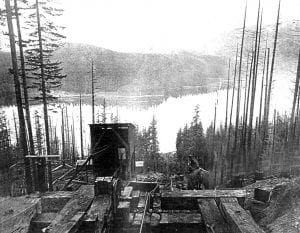
Mustoe’s interviewees all remembered Bellingham Coal Mine’s foreman. “Jim Pascoe pretty much singlehandedly directed the function of the mine and supervised the underground,” he says. Pascoe remained until another company bought the mine in 1952. They went bankrupt three years later, despite automating production.
Former miners had many stories to tell. One Walter Johnson told Mustoe how his wife Vera would pack him a second lunch in case of disaster. “In the ten years he worked there, he never got caught in a cave-in,” Mustoe says. “And every day, at the end of his shift, he would feed his second lunch to his mine mule.”
Mines kept mules and horses for pulling coal cars. “The animals were the star athletes of the mine,” Mustoe says. “They were treated very well. And by and large, the miners loved the animals.”
Miner Milo Watts recounted adopting a retired horse for his farm. Community organizations and miners’ families often toured the mines, attesting to their all-but-forgotten centrality to Bellingham’s industry.
Bellingham Underground
“Most people that live here now have no idea that coal was ever even mined in Bellingham,” Mustoe says. Their entrances sealed, Bellingham’s mines presumably collapsed and flooded due to rotting timbers and abandoned pumps. Developers still carefully consider potential hazards.
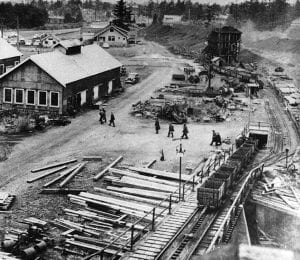
As the City’s Bellingham Coal Mine Map shows, tunnels extended throughout the entire Birchwood area. Park Manor Shopping Center sits atop the paved-over entrance. Because tunnels were 200 to 1,100 feet underground, Mustoe says, residents’ fears of cave-ins are unfounded.
“Sehome mine is a different story,” says Mustoe. Holes have emerged on Railroad Avenue, State Street, and Holly Street pavement for over a century. After Holly Street’s Mason Building burned in 1994, drilling at the site (now a Starbucks and office buildings) in 1997 revealed shallow tunnels.
Stairwells and sidewalk prisms have long enchanted locals with the idea of Bellingham having underground passageways like Seattle or other big cities. Still, the true history delves just as deep into the city’s foundation.






